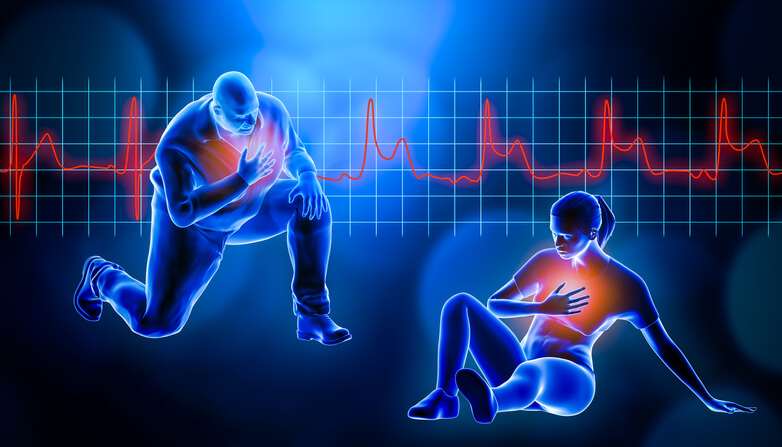
Cardiac Arrest: Risk Factors, Symptoms, and Treatment
Heart disease is the No. 1 cause of death in Americans and is the reason behind many 911 calls every year. Unfortunately, most people are under informed about the heart and the ailments that can be experienced. Let’s take a look at some basics.
Cardiac Arrest vs Heart Attack
What happens during a cardiac arrest is often called a heart attack. However, when trying to distinguish between cardiac arrest vs heart attack, there are differences. A heart attack occurs when blood flow to the heart is blocked. Cardiac arrest happens because something causes the heart to stop beating suddenly. When an artery that carries blood to a particular section of the heart becomes blocked, blood cannot get oxygen to that part of the heart. When that happens, that area of the heart starts to die. The individual must receive treatment quickly to prevent further damage.
When a person experiences cardiac arrest, the heart can stop without warning. Cardiac arrest can result when there is an electrical problem in the heart resulting in an irregular heartbeat, or arrhythmia, that interferes with the heart pumping blood. When the brain and other organs fail to get oxygen-rich blood, sudden cardiac arrest can cause death quickly. Life-saving treatment for a person with cardiac arrest includes using an automated external defibrillator (AED) and administering cardiopulmonary resuscitation (CPR).
A heart attack can increase an individual’s risk for cardiac arrest. However, other conditions can lead to cardiac arrest, including heart failure and cardiomyopathy, which is a thickening of the heart muscle. Ventricular fibrillation, a condition that causes the heart to beat rapidly with irregular electric impulses, can also cause cardiac arrest.
Magnesium in Cardiac Arrest
Low magnesium can cause irregular heart rhythms. Ironically, individuals with high blood pressure may be prescribed diuretics that cause frequent urination. When the body loses a lot of fluid, it also loses minerals like magnesium and potassium. Chronic alcohol use and gastrointestinal problems can also deplete magnesium. Health care professionals often include magnesium in cardiac arrest treatment.
Signs of Cardiac Arrest
An individual might experience any or all the following signs of cardiac arrest: chest pain, shortness of breath, heart palpitations, and weakness. However, there is often no warning. Cardiac arrest symptoms occur immediately. An individual may collapse suddenly, be unable to breathe, have no pulse, and lose consciousness.
Post Cardiac Arrest Care
When a person shows symptoms of cardiac arrest, post cardiac arrest care should begin immediately. The first action is to call 911 and then get an AED quickly if one is available. If there is a bystander, tell him or her to call 911 and bring the AED immediately. Turn on the AED and follow the prompts. CPR is also critical when responding to cardiac arrest, so be sure to perform it while you’re waiting for the AED to be ready.
Keep Pushing
Even if you do not have access to an AED, CPR can be the difference between life and death. The key is to keep blood flowing to vital organs. When giving CPR, it is crucial to keep pushing until the individual begins breathing, moving, or until first responders with advanced training arrive. Administer chest compressions at the rate of 100 to 120 per minute with the chest rising fully between compressions.
After an individual reaches the hospital, emergency treatment will include stabilizing the patient and helping him or her achieve respiration and circulation. Medical staff may use a variety of options to evaluate the patient’s condition and treatment needs, including blood tests, electrocardiograms, and imaging tests such as X-rays, angiograms, and nuclear scans.
Long-Term Treatment for Cardiac Arrest
Long-term treatment for cardiac arrest may include anti-arrhythmic medications, ablation surgery to treat arrhythmias, implantable defibrillators, angioplasty, bypass surgery, or surgery to correct congenital heart defects. A patient recovering from cardiac arrest should follow the health care provider’s recommendation for cardiac rehabilitation and implement lifestyle changes such as quitting smoking, abstaining from alcohol, eating heart-healthy foods, and getting regular physical activity.
High-quality life-support training is the foundation for taking life-saving action when an individual experiences cardiac arrest. Call AZ ACLS today to learn about CPR and other life-support training for you or your colleagues.

No Comments
Sorry, the comment form is closed at this time.